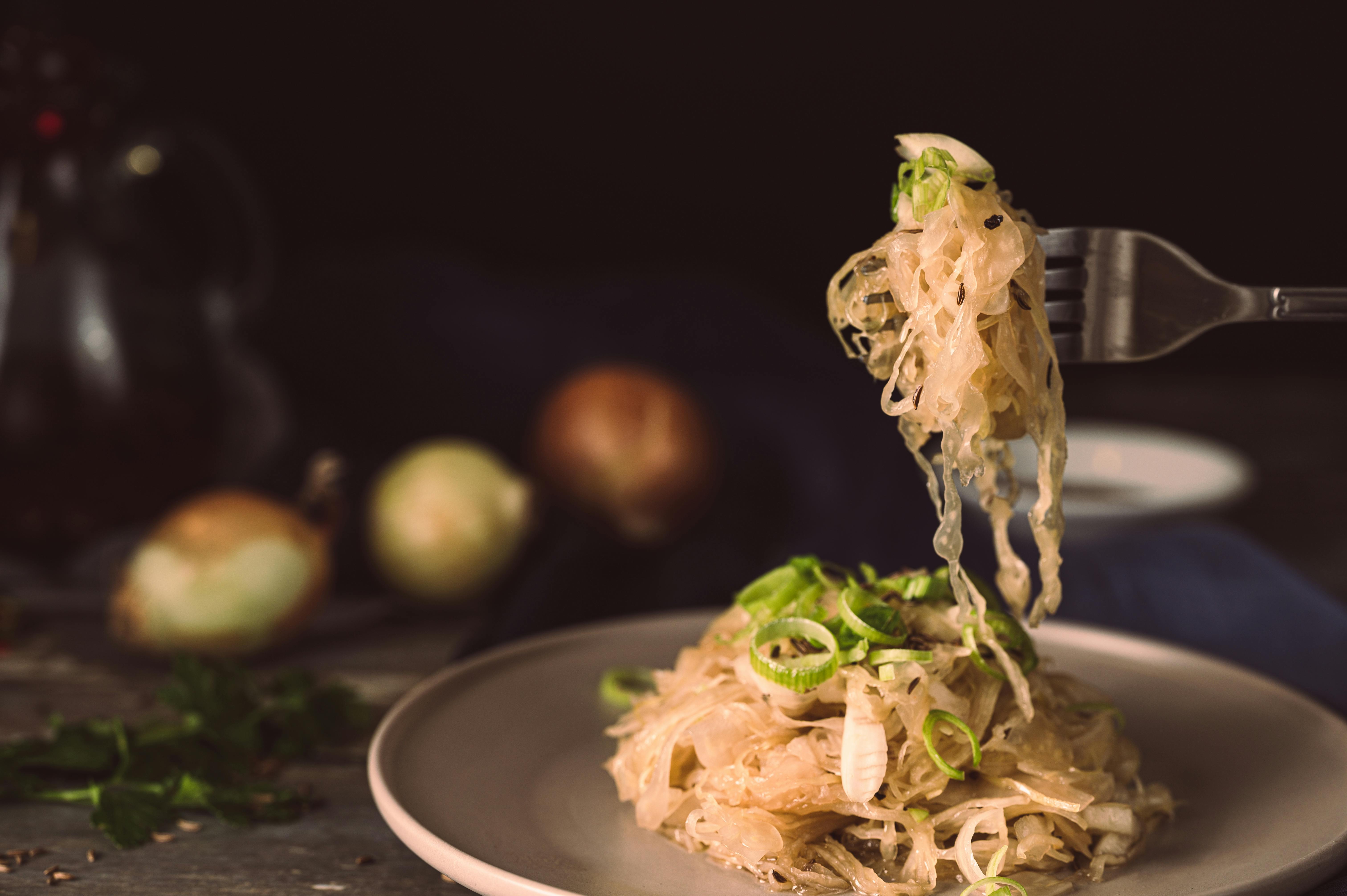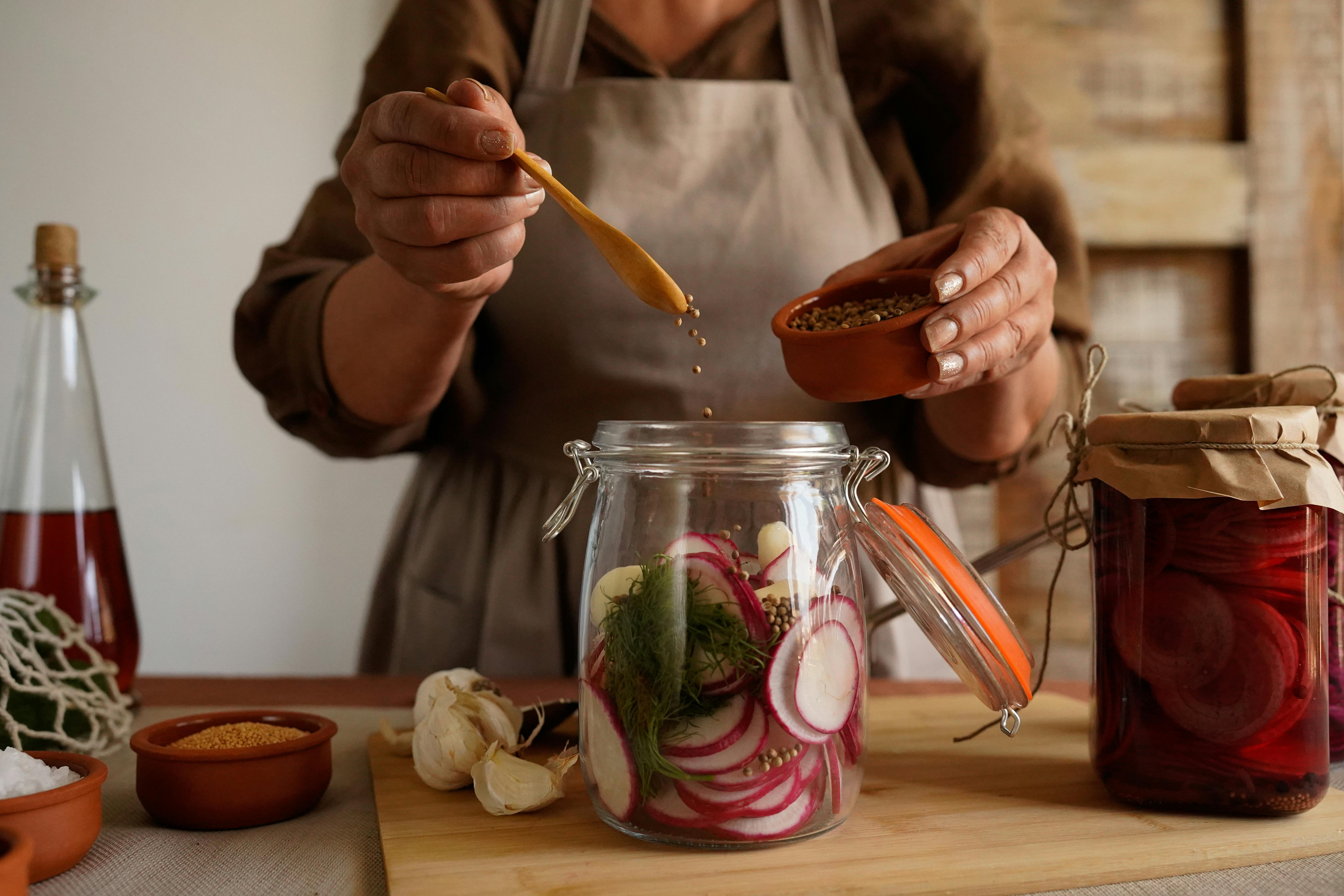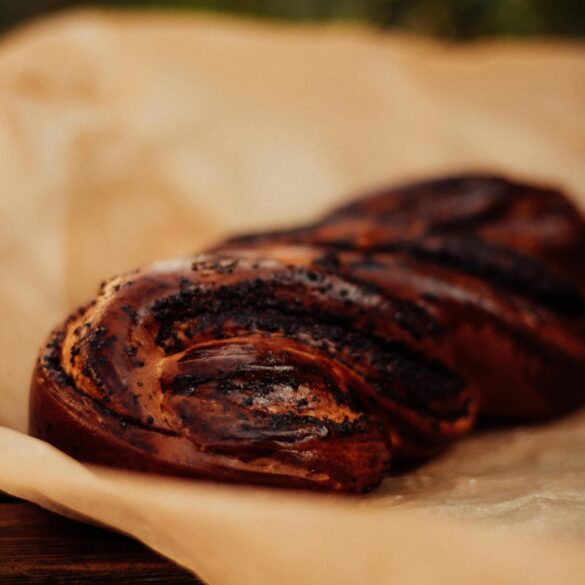German Sauerkraut Mastery: Insider Techniques for Probiotic Perfection
Ever stood in your kitchen, staring at that heap of shredded cabbage, wondering—am I really doing this like a true German? I have, at least a dozen times, and each attempt taught me something new. That’s the thing: fermenting sauerkraut is both old-school heritage and living science, a process as much about feel and intuition as exact recipes. The journey from raw cabbage to probiotic-rich perfection is dotted with small triumphs, weird smells, occasional disasters, and, if you’re lucky, the unmistakable tang of accomplishment.
Germany’s love affair with sauerkraut goes back over two millennia. Roman soldiers carried barrels of fermented cabbage on campaigns for digestive health and immune support—making this humble food both historical and functional.1
Why start with a cultural angle? Because honestly, what makes German sauerkraut unique isn’t just its taste, but the depth of tradition, the region-specific tweaks, and the collective kitchen wisdom passed down through generations. You can’t separate the health benefits—those living probiotics, improved digestion, immune support—from the time-tested German techniques that coax the wild bacteria into risky, delicious harmony.
German Origins & Tradition
Let me step back for a moment. Most people think of sauerkraut as a side dish at Oktoberfest, but its roots run deeper and wider. Traditional sauerkraut isn’t just cabbage, salt, and time—it’s a living repository of rural innovation and survival. In Bavaria and Franconia, grandmothers (“Omas,” if we’re being authentic) would bury enormous crocks in cool cellars, checking them daily, tending the kraut like a living relation. Meanwhile, up north, the recipe shifted—sometimes with juniper berries, sometimes with caraway—reflecting the deeper, more herbal notes preferred along the Baltic coast.
Fermentation Science: Why Probiotics Matter
Okay, let’s get grounded in what makes sauerkraut such a nutritional powerhouse—probiotics. The process that turns cabbage into sauerkraut is pure wild fermentation: naturally occurring lactobacilli (lactic acid bacteria) dominate, outcompeting harmful bacteria, and converting sugars into lactic acid—a natural preservative that gives sauerkraut its mouth-puckering tang.3 But (and this is crucial), not all sauerkraut ferments are created equal. German home ferments, kept at the cool temperatures of European cellars, tend to maximize probiotic diversity—with robust populations of Lactobacillus plantarum, Leuconostoc mesenteroides, and others proven to support gut health.4
“Fermentation is the controlled spoilage of food—and sauerkraut is Germany’s gift to microbial gastronomy.”
What really strikes me is just how alive this process feels, even after years of practice. Sometimes I open a crock expecting that clean, sour whiff—only to be greeted by rubbery funk. That’s fermentation: messy, unpredictable, and entirely human.
- Primary keyword: German sauerkraut
- Secondary keywords: fermentation, probiotic health, gut microbes
- LSI keywords: lactic acid, kimchi, bacteria, salt ratio, cabbage, German food, cultural tradition, digestive system, kitchen mistakes
Mastering the Method: Step-by-Step
Ready to jump in? Here’s what gets me every time—sauerkraut isn’t just a recipe. It’s a relationship. You need hands-on attention: clean technique, salt ratio mastery, the right vessel, and a willingness to course-correct. Before we get prescriptive, let’s pause here and consider: Are you aiming for classic German flavor, maximum probiotics, or just not poisoning your friends? All three, ideally. But honestly, sometimes only one is possible, depending on your experience level and kitchen climate.
Mastering the Method: German Insider Step-by-Step
Back when I first started with sauerkraut—armed with a YouTube video, a borrowed crock, and more confidence than skill—I made the CRITICAL error of under-salting. The batch went soft, molded, and stank of gym socks. The lesson? Precision and adaptation trump tradition every time.
- Select Your Cabbage: Use dense, late-harvest white cabbage. German varieties like “Weißkohl” contain the right moisture and sugar levels for clean fermentation.5
- Prep & Salt Ratio: Weigh your shredded cabbage. Add 2% salt by weight—about 20g salt per 1kg cabbage. Too little, and pathogenic bacteria flourish; too much, and fermentation stalls.6
- Packing & Weighing Down: Pack tightly in your fermenting vessel, eliminating air pockets. Use a weight—ceramic stones, clean glass—to keep the cabbage submerged in its own brine.7
- Temperature & Timing: Germans traditionally ferment sauerkraut at 18–22°C (64–72°F). At this range, you’ll get peak probiotic activity, dense lactic-acid tang, and crisp texture. Cooler temps slow the process, hotter temps risk mushiness.8
- Scum Control & Daily Care: Remove “scum” (yeast, foam) with a clean spoon daily. This keeps bad microbes and off-flavors at bay.9
- Tasting & Timing: Germans typically ferment for 2-3 weeks for mild kraut, 4-6 weeks for deep tang and maximum probiotic benefit. Taste at week 2; don’t be afraid to let it ride longer for complexity.
“Salt is more than seasoning—it’s a gatekeeper for fermentation, shaping the microbial community for optimal health benefits.”
Common Mistakes & Recovery Tips
What I should have mentioned first: most home fermenters, myself included, mess up at least once. The good news? Recovery is possible. Here’s a table breakdown of typical issues and insider troubleshooting hacks:
| Fehler | Symptoms | Fix | Probiotic Impact |
|---|---|---|---|
| Too Little Salt | Slimy, off-smelling, quick spoilage | Add extra salt, repack, start over if moldy | Loss of lactobacilli, lower probiotic count |
| Overheating | Kraut turns soft, “cooked” flavor | Move to cooler area, cover vessel | Lactic-acid bacteria die off, reduced diversity |
| Exposed to Air | Dark spots, mold, “off” tang | Remove surface mold, repack deeper | Compromised batch, possible spoilage |
| Not Enough Time | Cabbage still sweet, texture hard | Ferment longer, patience! | Low probiotic development |
Optimizing for Health: Advanced Probiotic Strategies
Let me think about this: the real measure of sauerkraut isn’t just flavor—it’s probiotic load. So, how do Germans maximize health benefit? Here are the top advanced strategies I’ve picked up from both professional fermenters and quirky home recipes:
- Use organic cabbage—pesticides can suppress wild bacteria and skew your ferment11
- Avoid chlorinated water in your brine (tap water is often the stealth killer of home fermentation)
- Add a spoonful of “starter” brine from a successful batch for insurance against batch failure
- Don’t over-wash cabbage—leave some surface microbes for natural fermentation
As someone who once ruined a batch with overzealous cleaning, I now lean toward “minimal interference.” There’s a lesson in trusting wild processes—something German fermenters seem to understand intuitively.
“Traditional German sauerkraut offers a living snapshot of regional microbes, imparting both flavor and health benefits unique to each household.”

Cultural Variations & Regional Insights
Anyone who’s traveled through Germany knows that sauerkraut is not monolithic. Funny thing is, every region (sometimes every family) swears their approach is superior. In Baden-Württemberg, my mentor always said, “Stir only with a wooden spoon, never metal!” She claimed metal disrupts microbial growth, though recent lab testing suggests minimal impact. Still, tradition matters.13
Swabians add apples for tartness, while Berliners finish kraut with juniper berries and a splash of Riesling. Some northern towns mix in brown sugar or goose fat during winter ferments.14
- Bavarian kraut (apples, caraway, heavy brine)
- Berlin-style (juniper, wine, cool spring fermentation)
- Swabian specialty (extra salt, crisp texture)
Let me clarify that: regional variation isn’t just about flavor, but about adapting the ferment to seasonal temperature, microflora, and family lore. I’ve tried Berlin juniper kraut during humid summers—it tends to go weird unless you adjust salt upwards and keep a close eye on scum.
Serving & Storing: Best Practices
What really excites me is how Germans treat sauerkraut after fermentation. Serving is just as important as making—the right preparation preserves probiotics. Here’s a process breakdown:
- Raw Kraut: For maximum probiotics, serve directly from the crock—never heat above 40°C (104°F); otherwise you’ll lose beneficial bacteria.15
- Storing: Germans use glass jars with tight lids; refrigerate up to 6 months, tasting monthly for flavor evolution.
- Cooking: If using in hot dishes (Bratwurst, Schupfnudeln, etc.), add kraut at the last minute and serve immediately—minimizing heat exposure.
Personal Mastery Lessons & Anecdotes
I’ll be completely honest: my first “perfect” batch of kraut was pure luck. I followed the ratios, had the right temperature, and, crucially, didn’t fuss with it. Now, more than a hundred batches in, what I’ve learned is that mastery isn’t perfection—it’s adaptation. Recovery from mold outbreaks, improvising with available salt, and honestly, learning to taste for subtle acid not just big tang.
“I go back and forth on whether precise temperature control is essential, but after fermenting in both German cellars and city apartments, I’ve found adaptability is key—trust the process, but don’t ignore warning smells.”
- Test batches in different climates—what works in Munich often flops in Frankfurt
- Taste every week—don’t just trust the clock
- Record details—climate, salt, water type—for future improvement
Conclusion: Fermenting with German Ingenuity
If you’ve made it to this point, let that sink in for a moment: mastering German sauerkraut isn’t just a culinary accomplishment—it’s joining a centuries-old experiment in living, thriving microbial health. From Roman legions to modern Berlin lofts, the thread is clear: adaptation, observation, and gentle intervention lead to both delicious and health-boosting outcomes. Meanwhile, the best probiotic benefits arise from a careful balance of tradition and improvisation. What matters most? Staying curious, open to tweaking technique, and learning through inevitable mistakes.
“The real beauty of German sauerkraut fermentation is its accessibility—anyone can do it, but only the attentive reap true probiotic rewards.”
Maybe you’ve wrestled with slimy batches, lost temperature control during heat waves, or over-salted one batch and under-salted the next. I’ve definitely been there, and I’ve come to celebrate those moments of learning—each error brings you closer to mastery.
Looking ahead, as new research emerges on specific probiotic strains and health benefits17, German sauerkraut remains the gold standard for beneficial fermentation. Integrate the old with the new, and you’ll not only improve your health—but maybe inspire a few friends to join the tradition. So, batch by batch, let the kraut teach you; mastery is iterative, always evolving, and deeply rewarding.
Verweise


